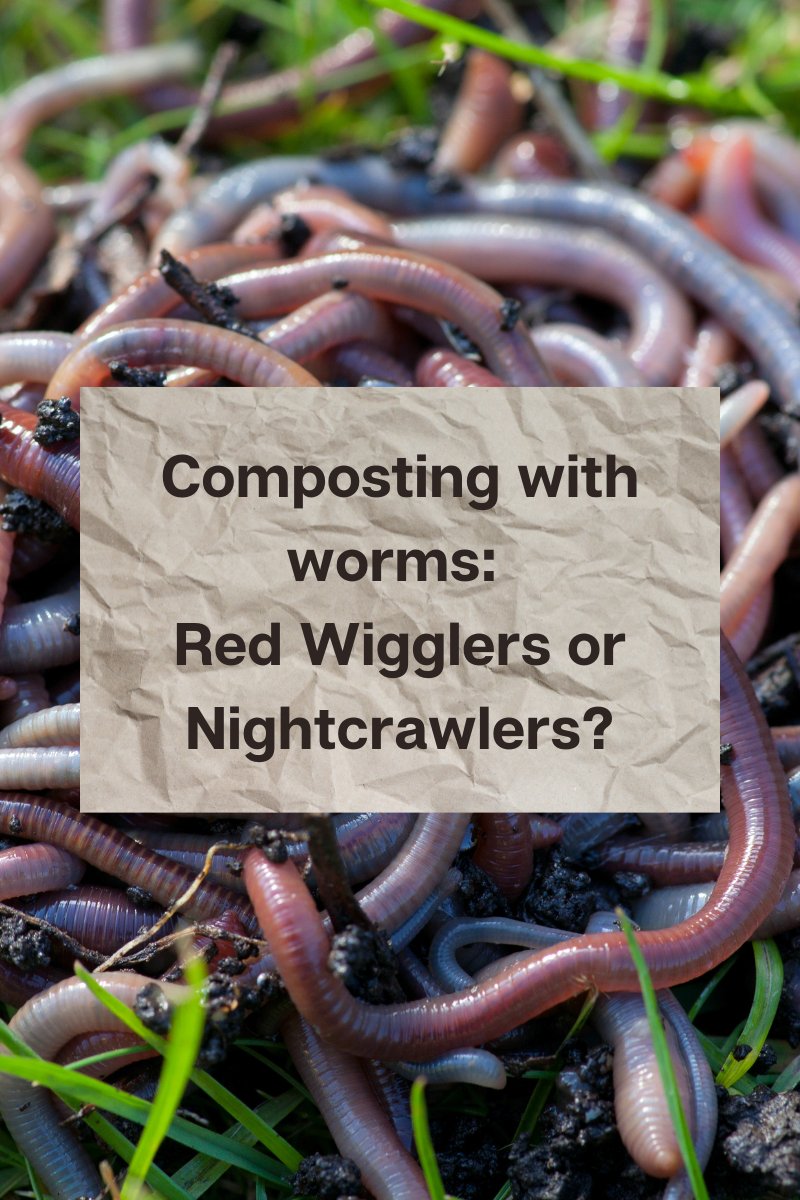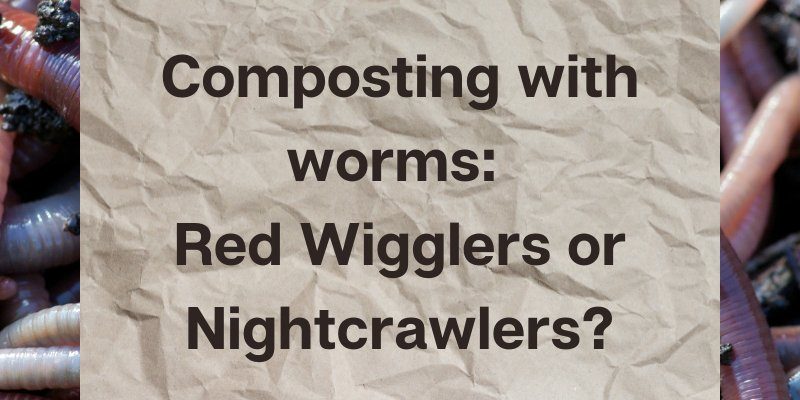
Identifying red wigglers versus nightcrawlers isn’t just about who looks better in the worm world; it’s about understanding their roles in gardening, composting, or baiting a fishing hook. Let’s dive into the differences that make each worm special, helping you choose the right one for your needs.
What Are Red Wigglers and Nightcrawlers?
Red wigglers, scientifically known as *Eisenia fetida*, are small, lively worms often found in compost heaps. They thrive in organic matter and are champions at breaking down waste quickly. You might spot them wriggling around in your compost bin, turning scraps into rich, dark humus. Their vibrant reddish-brown color, about 3 to 4 inches long, is an easy way to identify them.
In contrast, nightcrawlers, or *Lumbricus terrestris*, are larger and appreciate a different environment. These worms can grow up to 8 to 12 inches long and are usually found in soil, where they create tunnels that aerate the ground. Nightcrawlers are typically a darker shade of brown or gray, which helps them blend in with the soil.
So, why do these differences matter? Simply put, it helps you choose the right worm for your gardening or fishing needs.
Physical Differences: Size and Color
When you’re trying to distinguish between red wigglers and nightcrawlers, the most noticeable differences are size and color.
- Size: Red wigglers are smaller, usually around 3 to 4 inches long. Nightcrawlers, on the other hand, can reach impressive lengths of up to 12 inches.
- Color: Expect red wigglers to have a reddish-brown hue, making them look a bit like a wriggling hot dog. Nightcrawlers are darker, often presenting a grayish-brown exterior that helps them blend into the soil.
These physical traits are a great starting point for identification. They offer an immediate clue to which worm you’re dealing with, especially if you’re holding them in your hand.
Habitat Preferences: Where You’ll Find Them
Habitat is another vital factor in identifying these worms. Red wigglers love environments rich in organic matter, like compost piles or decaying leaves. If you dig into a compost bin and see small, active red worms, you’ve likely struck gold with red wigglers. They thrive on the decaying plant material and food scraps, converting waste into nutrient-rich compost.
Nightcrawlers, meanwhile, prefer a more traditional soil environment. They burrow deep into the earth and are less likely to be found in compost. If you’re out in the garden and notice a larger worm wriggling in the dirt, it’s probably a nightcrawler. They create deep tunnels that aerate the soil, which enhances water drainage and root growth for plants.
Understanding their habitat helps ensure that you’re using the right type of worm for the right setting.
Behavioral Traits: How They Move and React
Worm behavior is fascinating and can give you more clues about which species you’re observing. Red wigglers are energetic and constantly on the move. If you place them in a new environment, they’ll wriggle around quickly, searching for food. Their active nature is part of what makes them great composters—they’re always looking for something to munch on!
Nightcrawlers, however, are more laid-back. They tend to be less active on the surface and prefer to burrow down into the ground. If you catch one, it might wriggle a bit but will likely retreat quickly back into the soil. This behavior helps them avoid predators and maintain moisture.
Don’t be surprised if the worms you find in your garden exhibit these traits! Observing them can not only help with identification but also deepen your understanding of their roles in the ecosystem.
Uses in Gardening and Composting
Now that you know how to spot the difference, let’s consider *why* it matters. Understanding the role of each worm can significantly improve your gardening efforts.
- Red Wigglers: These guys are the composting champions. They consume kitchen scraps, paper, and other organic waste, breaking it down into nutrient-dense compost that enriches your garden soil.
- Nightcrawlers: If you’re looking to enhance soil health, nightcrawlers are your go-to. Their burrowing helps aerate the soil, improving drainage and root penetration. They’re also excellent for fishing, providing a robust bait for catching larger fish.
So, if your goal is to reduce waste while gardening, red wigglers are essential. But for soil health or fishing, nightcrawlers take the lead!
How to Care for Red Wigglers and Nightcrawlers
Caring for each type of worm can vary significantly and it’s essential to know what they need to thrive.
For red wigglers, you’ll want to create a compost bin that provides moisture and a constant supply of organic matter. They thrive in warm conditions (about 60°F to 80°F) and enjoy a moist environment, so regularly check on their bedding material. If it gets too dry, they won’t be happy!
In contrast, nightcrawlers prefer a more natural soil environment. They need rich, loamy soil and generally require less direct care than red wigglers. Just ensure their soil stays moist—not soggy—so they can keep burrowing and aerating effectively.
Understanding these care needs allows you to create a healthy environment for your worms, benefiting your gardening or composting endeavors.
Ultimately, knowing how to identify red wigglers from nightcrawlers is all about understanding their unique characteristics and roles. Whether you’re composting kitchen scraps or enhancing your garden’s soil, choosing the right type of worm can make a big difference.
Now that you know the differences in size, color, habitat, behavior, and uses, you can confidently select the right worms for your gardening or fishing projects. The next time you’re out shopping for worms, you’ll feel like a pro! Happy worm hunting!

